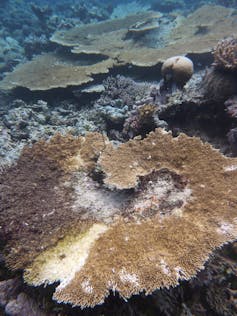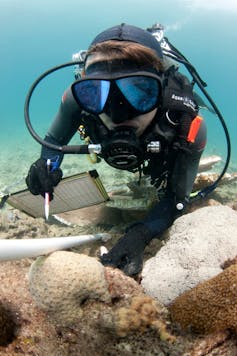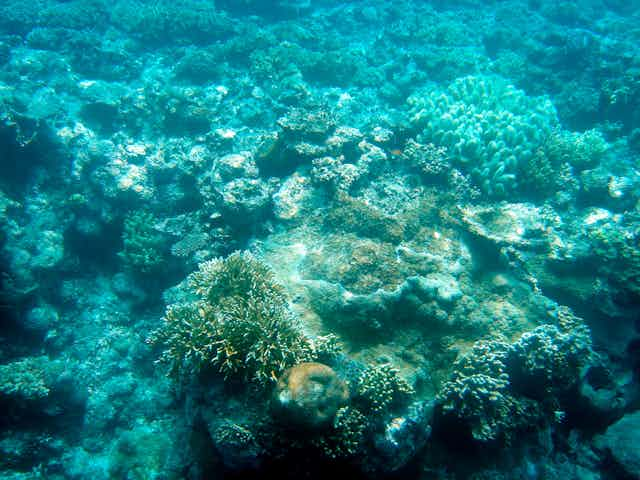Dredging has a direct impact on coral health, according to a study published today in PLoS ONE that shows for the first time the link between dredge spoil and coral disease in the wild.
The research, led by Joseph Pollock at James Cook University, found that corals exposed to dredge spoil suffered twice the frequency of disease. While the study took place in Western Australia, experts said the findings have implications for dredging on the Great Barrier Reef.
Across the globe coral cover has been decreasing — by up to 80% in some oceans. Disease is increasingly thought to be a factor; some reefs in the Caribbean have lost 95% of their coral cover to disease. Many factors are known to be involved, including high water temperatures, predators (such as crown-of-thorns starfish), and water quality.
In December 2011 Pollock and colleagues surveyed corals near Barrow Island, Western Australia, affected by 7 million cubic metres of dredge spoil for the Gorgon natural gas project. Using satellites to measure the dredge plume over time, they counted the number of corals affected by disease and the time they were exposed to the plume.

Corals affected by the plume for the greatest length of time showed a two-fold increase in disease frequency relative to corals unaffected by the dredge spoil.
Pollock and Professor Bette Willis, a co-author on the study, said dredge spoil affects corals in two ways. The sediment reduces light received by corals, which they depend on for feeding; and when sediment settles the corals have to spend more energy cleaning themselves. Both impacts cause stress, and that stress manifests as disease and ill-health.
The study also looked at other factors that might be causing coral disease, including warmer temperatures and predation, but found that there were no changes in either at the study site that could be causing disease, pointing the finger at dredging.
Lack of monitoring threatening reefs
Professor Terry Hughes, co-director of the Australian Research Council Centre of Excellence for Coral Reef studies, said the new research shows a “definitive impact” of dredging on corals, and is comparable to dredging activities on the Australian east coast.
An estimated 140 million cubic metres of dredging is under consideration for the Great Barrier Reef over the next decade. The Abbot Point dredging project, approved by the federal government in 2013, will dump 3 million cubic metres.

While there is currently no link between ports, development and coral loss on the Great Barrier Reef, dredging has damaged other habitats and species in the region. According to the Great Barrier Marine Park Authority regulations will prevent the Abbot Point dredge spoil being dumped on corals, seagrass and other sensitive reef habitats.
But Professor Hughes, who was not involved with the current study, said reefs near dredging at Townsville have died off over the past 25 years, although there hasn’t been proper monitoring to link the two.
He said monitoring of dredging on the east coast is not as rigorous as monitoring in Western Australia where the study took place.
“The problem with the monitoring as it exists now is that it tends to be very short term, focusing on the dredging period. Nobody is looking at where that sediment has gone after five or ten years.”
Professor Hughes said other studies have shown that sediment from ports can spread further, last longer and can be more toxic than port authorities think.
A study by Kathryn Burns from James Cook University, published this year, showed that chemicals from coal dust — from trains, ports and loading facilities — currently exist at toxic levels within the Great Barrier Reef. It also found that the chemicals have spread beyond the reef boundary.
“It’s quite damning,” said Professor Hughes, “Under the nose of monitoring, there’s already been a huge spread of silt from coal port activities… It really undermines the claim that dredge spoil is only impacting the dredge site.”
“Clearly what these studies are saying is that dredging is not just benign sand, it’s having an impact, and a much broader impact that what port authorities would have us believe.”

